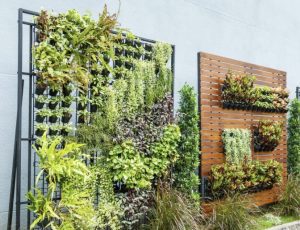In the ever-evolving world of technology, industries across the board are experiencing transformative changes, and commercial landscaping is no exception. As we step into 2024, many technological advancements are reshaping the landscape – literally and metaphorically. The commercial landscaping industry is on the brink of a revolution from sustainability to efficiency and aesthetics. Let’s delve into the Techscape trends that are set to redefine the future of commercial landscaping.

Sustainable Landscaping Practices
Sustainability is no longer a buzzword but a driving force in modern industries. In commercial landscaping, this translates into a shift towards eco-friendly practices. Smart irrigation systems, equipped with sensors and weather forecasting capabilities, optimize water usage, ensuring that landscapes receive just the right amount of water, reducing waste and promoting water conservation.
Moreover, the integration of solar-powered landscaping tools and machinery is gaining momentum. Electric lawnmowers, trimmers, and leaf blowers are quieter and contribute to a significant reduction in carbon emissions. Sustainable landscaping practices are environmentally responsible and resonate well with businesses and consumers alike, aligning with the growing demand for corporate social responsibility.

AI and Robotics for Precision Maintenance
Artificial Intelligence (AI) and robotics are making their mark in the commercial landscaping sector, bringing precision and efficiency to maintenance tasks. Drones equipped with advanced imaging technology are being deployed for aerial surveys, allowing landscapers to assess large areas quickly and identify issues such as pest infestations, diseases, or irrigation problems.
Robotic lawnmowers are another game-changer, capable of autonomously navigating landscapes and maintaining optimal grass height. This reduces the need for human labor and ensures a consistent and manicured appearance. The marriage of AI and robotics streamlines maintenance processes, resulting in cost savings and enhanced overall efficiency.
Augmented Reality (AR) in Design Visualization
In the realm of commercial landscaping design, augmented reality (AR) is making waves. Landscape architects and designers can now use AR applications to create virtual representations of their designs overlaid onto real-world spaces. This allows clients to visualize the proposed landscapes in 3D before any physical work begins, fostering collaboration and ensuring that expectations align with the final outcome.
AR is a powerful tool for design visualization and aids in decision-making processes. In real-time, clients can experiment with different design elements, plant choices, and layout options, fostering a more interactive and engaging design experience.

Smart Green Walls and Vertical Gardens
As urban spaces become more constrained, the trend towards vertical landscaping is gaining traction. Smart green walls, equipped with sensors and automated irrigation systems, are becoming popular choices for commercial properties. These living walls enhance aesthetics and contribute to improved air quality and energy efficiency by providing natural insulation.
Vertical gardens are visually striking and serve as sustainable solutions for urban spaces with limited ground area. These installations leverage advanced irrigation systems, ensuring that plants receive the right amount of water without wastage. Integrating smart technology in vertical landscaping opens up new possibilities for greening urban environments while promoting biodiversity and sustainability.

The Rise of Smart Landscaping Management Platforms
The management of commercial landscapes is becoming increasingly sophisticated with the emergence of smart landscaping management platforms. These platforms integrate data from various sensors, weather forecasts, and maintenance schedules to provide real-time insights and recommendations.
Landscaping professionals can remotely monitor and manage irrigation systems, adjust lighting schedules, and receive alerts for potential issues. This level of connectivity and automation enhances efficiency and enables proactive maintenance, preventing potential problems before they escalate.
Conclusion
As we navigate the ever-changing landscape of technology, the commercial landscaping industry is embracing innovation at an unprecedented pace. The Techscape trends of 2024 are transforming how we design and maintain outdoor spaces and contributing to a more sustainable and visually appealing environment.
From sustainable practices and precision maintenance with AI and robotics to the integration of AR in design visualization and the rise of smart landscaping management platforms, the future of commercial landscaping is looking greener, smarter, and more connected than ever before. As businesses prioritize sustainability and efficiency, the Techscape revolution is set to leave an indelible mark on the industry, ushering in a new era of intelligent and eco-friendly landscapes.